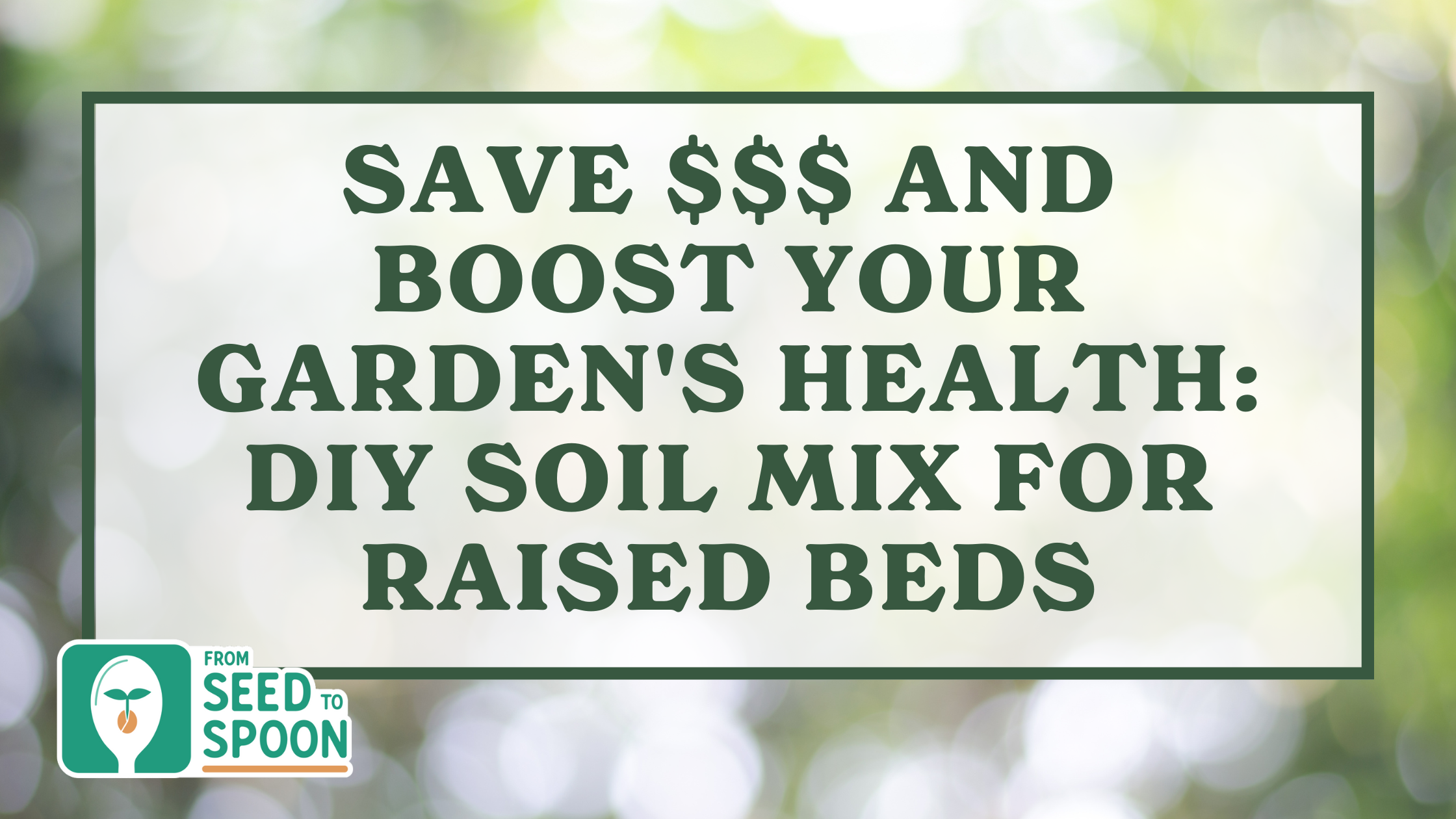Gardening can be a rewarding but expensive hobby, especially when it comes to purchasing high-quality soil mix, which is essential for growing healthy plants and food. However, there’s a cost-effective solution that not only saves money but also ensures your plants thrive: making your own soil mix. In this blog post, we’ll dive into the process of creating a homemade soil mix, inspired by the methods shared in a recent gardening tutorial.
The Cost-Effective Soil Mix Solution
Buying prepackaged potting soil can quickly add up, especially if you have multiple garden beds to fill. The alternative? Making your own soil mix. This approach is not only more economical but also allows you to control the quality and composition of the soil, ensuring your plants get the best possible environment to grow.
The Mel’s Mix Method
The method we’re discussing is based on Mel’s Mix from the “Square Foot Gardening” book. This mix consists of three equal parts:
- Coconut Coir: An eco-friendly, renewable substitute for peat moss, coconut coir helps retain moisture in the soil.
- Vermiculite: This mineral helps aerate the soil and retain water and nutrients. However, vermiculite can be pricey, so if you’re looking to cut costs further, you can substitute additional compost for the vermiculite you’d otherwise use.
- Compost: The key to nutrient-rich soil, compost provides a diverse range of essential nutrients and microorganisms.
By combining these three components, you create a balanced, nutrient-rich soil mix perfect for raised beds and container gardening.
Mixing Your Own Soil
Creating your own soil mix is straightforward. You can use a 5-gallon bucket to measure out equal parts of coconut coir, vermiculite (or extra compost), and compost. Mix these ingredients directly in your garden bed or a large container, ensuring they are well combined. This method not only saves money but also gives you a high-quality soil mix that can last for years with proper maintenance.
Maintaining Your Soil Mix
While this homemade mix provides a great start, it’s important to refresh it with new compost each planting season to maintain its vitality and nutrient levels. Adding fresh compost rejuvenates the soil, ensuring your plants have all they need to grow strong and healthy.
The Benefits of DIY Soil Mixing
Making your own soil mix is not just a cost-saving measure; it’s a way to ensure your garden is sustainable and productive. Knowing exactly what goes into your soil allows you to tailor it to the specific needs of your plants, leading to better growth and healthier produce.
If you have any questions or need further advice on creating your own soil mix, feel free to reach out or leave a comment. We’re here to help you make your gardening journey a success.
And remember, for more gardening tips and tricks, consider checking out the From Seed to Spoon app. This tool can help you plan, manage, and optimize your garden, making your gardening experience even more enjoyable and fruitful.

Carrie Spoonemore, co-founder of “From Seed to Spoon,” stands as a beacon of inspiration for gardeners and health enthusiasts alike. Her journey alongside her husband, Dale Spoonemore, in creating a platform that demystifies gardening and promotes a healthier lifestyle, has made a significant impact on individuals around the globe. Through the “From Seed to Spoon” app, Carrie has dedicated herself to empowering people to take control of their health and environment by growing their own food.
With a profound belief in the power of gardening to improve mental and physical health, Carrie’s contributions to the Seed to Spoon blog reflect her holistic approach to wellness. Her articles often focus on the nutritional benefits of homegrown fruits and vegetables, organic gardening practices, and the mental health benefits of spending time in nature. Carrie’s expertise in health science shines through in her detailed discussions on how specific plants can contribute to a balanced diet and overall well-being.
Carrie’s passion for gardening is deeply intertwined with her commitment to family and community wellness. She frequently shares personal stories of how gardening has brought her family closer together, offering practical tips for involving children in gardening activities and making it a fun, educational experience. Her writing encourages families to explore gardening as a means of spending quality time together while learning about nature and sustainability.
In addition to gardening advice, Carrie’s contributions to the blog include insights into the use of technology to enhance the gardening experience. She has played a crucial role in designing the “From Seed to Spoon” app to be user-friendly, ensuring that users of all ages and backgrounds can navigate the complexities of gardening with ease. Her vision for the app is not just as a gardening tool but as a vehicle for change, inspiring individuals to adopt a more sustainable lifestyle by growing their own food.
Carrie Spoonemore’s presence on the blog is marked by her compassionate approach to teaching and her unwavering belief in the transformative power of gardening. Her work continues to inspire a community of gardeners to pursue a healthier, more sustainable way of living, proving that with the right tools and knowledge, anyone can become a gardener and advocate for their health and the planet.






